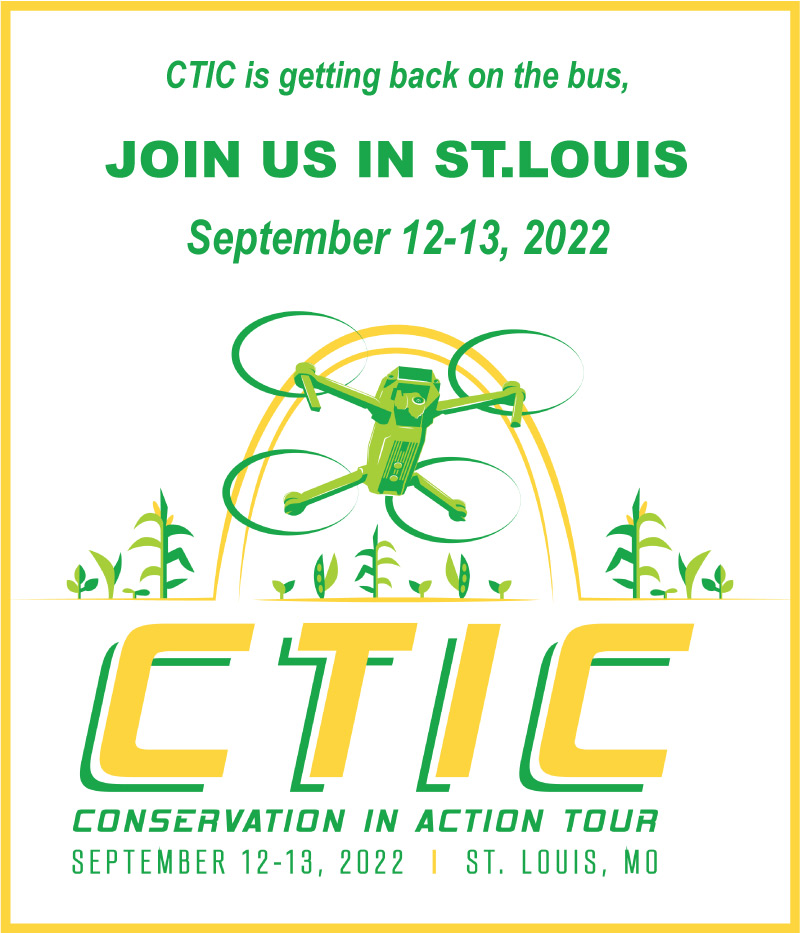CTIC Project Updates
Cover Crop Math:
The research and field work for our Cover Crop Math project was completed this September.
CTIC has produced a set of fourteen feature-style articles describing project outcomes and are currently working with Penton Media to determine whether any are a fit to run in Corn & Soybean Digest. Those decisions should be made within the next couple weeks, after which CTIC will share the remaining features with this project's partners and publish them on our website.
Farmer-beekeeper pairs involved in the project collected their last samples of pollen bees collected from project sites in September. The pollen is in the lab for species identification which will offer insight into what portion of the bees' diet was supplied by habitat this project established on participating farms. The DNA identification method used is new and developed partially through this project's support. These pollen ID results are on track to be delivered later this spring and are expexted to provide the greatest indicator of our success providing cost-effective on-farm pollinator habitat.
National Water Quality Initiative:
CTIC is currently working with USDA's Natural Recources Conservation Service (NRCS) on a project in support of the National Water Quality Initiative (NWQI). This project is identifying successful watershed management activities that engage landowners, farmers, and the broader public to protect water quality. Insights developed through this project will inform future NRCS efforts to support local watershed initiatives with technical and financial resources.
As a first step, CTIC is convening wareshed leaders from across the country at five forums to learn from their experience-successful or otherwise-with diverse watershed management and communication strategies. Our first forum will take place in North Carolina on January 30th followed by forums in Vermont, Oklahoma, Illinois and Washington over the next few months. Contact Tammy Taylor at taylor@ctic.org for more information.
National Aquatic Resource Surveys:
CTIC is writing a series of articles profiling farmers who have improved habitat and reduced nutrient loading in surface waters. The articles will be designed for placement in agricultural publications, environmental media and local newspapers to highlight environmental improvements by farmers and to inspire others to protect water quality.
We're looking for examples of great on-farm projects where voluntary nutrient management practices, habitat restoration and/or structural improvements are reducing nutrient loading and other water quality impairments. If you know of a project or a farmer that fits this description, contact Tammy Taylor at taylor@ctic.org.
OpTIS:
CTIC is currently working with Applied GeoSolutions, a data analytics company based out of New Hampshire, to refine and implement a remote sensing-based system that estimates crop residue amounts and determines the presence or absence of cover crops on cropland. Through this technology, called the Operational Tillage Information System (OpTIS), CTIC will lead the next phase of the Crop Residue Management (CRM) survey, which CTIC operated between 1989 and 2004.
The current OpTIS project will collect crop residue and cover crops data from the U.S. Corn Belt between 2005 and 2017, filling gaps in tillage records that have widened since CTIC's last national survey in 2004. In addition to documenting farm management, OpTIS uses established models to estimate environmental outcomes including soil carbon sequestration, nutrient management, and greenhouse gas emissions Data and information from OpTIS should be available from CTIC in the spring of 2019. You can contact Chad Watts at watts@ctic.org for more information.

